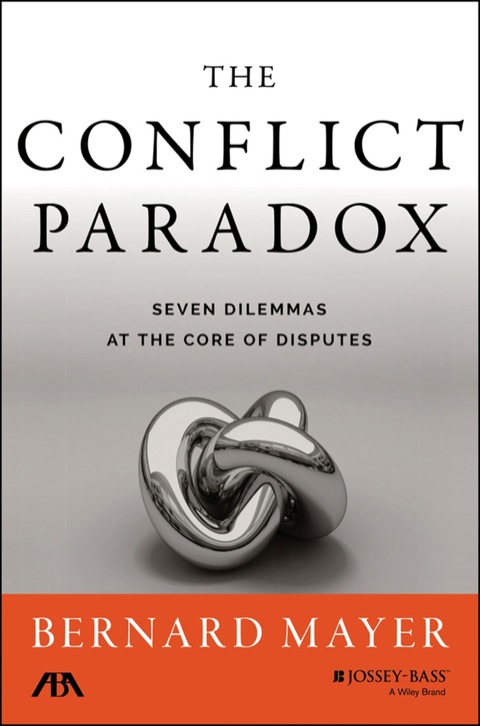Description
Efnisyfirlit
- Title Page
- Copyright
- Contents
- Preface
- Acknowledgments
- Chapter 1 The Art of Conflict
- What We Bring to the Table, and What the Table Brings to Us
- How Contradictions Make Us Who We Are
- A Developmental Perspective
- How Conflict Promotes Less Complex Thinking—and Simpler Thinking Promotes Conflict
- How We Promote More Complex Thinking
- Reflections from Practice
- Chapter 2 Competition and Cooperation
- Influential Approaches to Cooperation and Competition
- The Thomas-Kilmann Model
- Lax, Sebenius, and the Negotiator’s Dilemma
- Evolution and the Prisoner’s Dilemma
- The Evolution of Cooperation
- Evolutionary Lessons from the Prisoner’s Dilemma
- Limits of the Prisoner’s Dilemma
- A New Approach to Cooperation and Competition
- Reflections for Practice
- Chapter 3 Optimism and Realism
- The Faces of Optimism and Realism
- Optimism and Realism: the Emotional Dimension
- Embracing Uncertainty: Realistic Thoughts, Optimistic Attitudes
- The Ethics of Optimism and Realism
- Integrating Optimism and Realism, Clarity and Doubt
- Further Reflections from Practice
- Chapter 4 Avoidance and Engagement
- The Dimensions of Avoidance and Engagement
- Behavioral Elements of Avoidance and Engagement
- Emotional Elements of Avoidance and Engagement
- Attitudinal Aspects of Avoidance and Engagement
- Avoiding and Preventing, Engaging and Escalating
- The Ethical Challenge
- The Conflict Specialist’s Challenge
- Reflections from Practice
- Chapter 5 Principle and Compromise
- Principle Without Compromise Is Seldom Principled
- Principles Are Pragmatic
- The Power of Principle and Compromise
- Values, Interests, and Resources
- Compromising with Evil
- Reflections from Practice
- Chapter 6 Emotions and Logic
- The Response of Conflict Specialists to the Emotion-Logic Paradox
- Emotions, Logic, and Decision Making
- Emotions and Logic in Conflict Work
- The Language of Feeling and Thinking
- Feelings About Thoughts, Thoughts About Feelings
- Sequences and Iterations
- Narratives
- Observations
- Identifying Feelings and Thinking
- Venting
- Making Use of Tension in Our Own Experience of Emotion and Logic
- Follow Others’ Lead
- What We Feel, How We Think
- Gender and Culture, Emotions and Logic
- Reflections from Practice
- Chapter 7 Neutrality and Advocacy
- What We Mean by Neutrality
- Structural Neutrality
- Behavioral Neutrality
- Emotional Neutrality
- Cognitive Neutrality
- Perceptive Neutrality
- Aspirational Neutrality
- How the Elements Interact: A Case Example
- The Dimensions of Advocacy
- Advocacy as a Role
- Advocacy as a Set of Attitudes
- The Goals of Advocates
- The Advocate’s Skills
- Emotional Skills
- Communication Skills
- Strategic Skills
- Advocates and Third Parties
- Susskind and Stulberg: A Classic Debate on Neutrality and Advocacy
- The Advocate Neutral
- (Further) Reflections from Practice and Life
- Chapter 8 Community and Autonomy
- Identity, Community, Autonomy
- Integrating Community and Autonomy: The Challenge for Conflict Interveners
- Staying with Autonomy
- Maintaining Connection
- Dealing with Multiple Communities and Attachments
- Reflections from Practice (and Life)
- Chapter 9 The Conflict Dialectic: Better Paradoxes, Better Conflict
- Paradox as a Method
- Other Paradoxes
- Process and Substance
- Substance and Relationship
- Outcome and Transformation
- And Still More
- Overlaps and Synergies
- Competition and Cooperation
- Optimism and Realism
- Avoidance and Engagement
- Principle and Compromise
- Emotions and Logic
- Neutrality and Advocacy
- Community and Autonomy
- Society’s Essential Paradoxes
- Final Reflections (and a Final Paradox)
- References
- Index
- EULA







Reviews
There are no reviews yet.